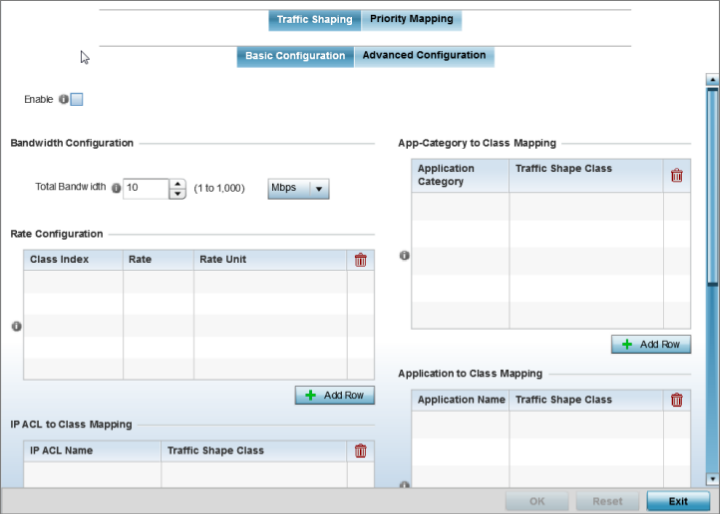Profile Overrides - Quality of Service (QoS)
About this task
The WiNG software uses different Quality of Service (QoS) screens to define WLAN and device radio QoS configurations.
QoS values are required to provide service priority to packets. For example, VoIP packets get higher priority than data packets to provide a better quality of service for high priority voice traffic.
The profile QoS screen maps the 6-bit Differentiated Service Code Point (DSCP) code points to the older 3-bit IP Precedent field located in the Type of Service byte of an IP header. DSCP is a protocol for specifying and controlling network traffic by class so that certain traffic types get precedence. DSCP specifies a specific per-hop behavior that is applied to a packet. This QoS assignment can be overridden as needed, but removes the device configuration from the profile that may be shared with other similar access point models.
To override an access point profile's QoS configuration:





